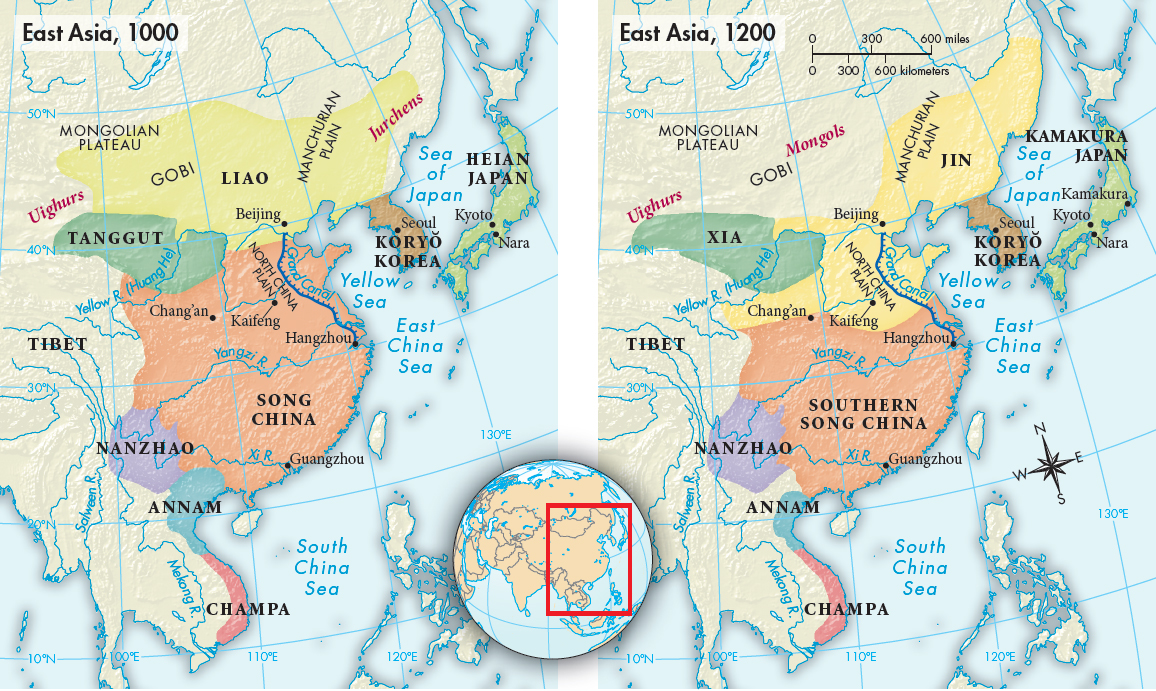The Song Dynasty
The founder of the Song Dynasty, Taizu (r. 960–976), was a general whose troops elevated him to emperor (somewhat reminiscent of Roman practice). To make sure that such an act could not happen in the future, Taizu retired or rotated his generals and assigned civil officials to supervise them. In time these civil bureaucrats came to dominate every aspect of Song government and society. The civil service examination system established during the Sui Dynasty (see “The Sui Dynasty” in Chapter 7) was greatly expanded to provide the dynasty with a constant flow of men trained in the Confucian classics.
Curbing the generals’ power ended warlordism but did not solve the military problem of defending against the nomadic Khitans’ Liao Dynasty to the north. After several attempts to push the Liao back beyond the Great Wall, the Song concluded a peace treaty with them. The Song agreed to make huge annual payments of gold and silk to the Khitans, in a sense paying them not to invade. Even so, the Song rulers had to maintain a standing army of more than a million men. By the middle of the eleventh century military expenses consumed half the government’s revenues.
In the early twelfth century the military situation rapidly worsened when the Khitan state was destroyed by another tribal confederation led by the Jurchens, who quickly realized how easy it would be to defeat the Song. When they marched into the Song capital in 1126, they captured the emperor and former emperor and took them and the entire court into captivity. Song forces rallied around one of the emperor’s sons who had escaped capture, and this prince re-established a Song court in the south at Hangzhou (see Map 13.1). This Southern Song Dynasty controlled only about two-thirds of the former Song territories, but the social, cultural, and intellectual life there remained vibrant until the Song fell to the Mongols in 1279.

MAP 13.1East Asia in 1000 and 1200The Song empire did not extend as far as its predecessor, the Tang, and faced powerful rivals to the north — the Liao Dynasty of the Khitans and the Xia Dynasty of the Tanguts. Koryŏ Korea maintained regular contact with Song China, but Japan, by the late Heian period, was no longer deeply involved with the mainland. By 1200 military families dominated both Korea and Japan, but the borders were little changed. On the mainland the Liao Dynasty had been overthrown by the Jurchens’ Jin Dynasty, which also seized the northern third of the Song empire. Because the Song relocated its capital to Hangzhou in the south, this period is called the Southern Song period.> MAPPING THE PASTANALYZING THE MAP: What were the countries of East Asia in 1000? What were the major differences in 1200?CONNECTIONS: What connections do you see between the length of their northern borders and the histories of China, Korea, and Japan?
